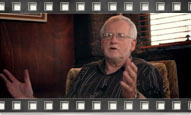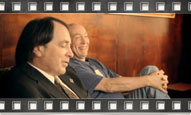1989: It came without a manual
New Zealand nearly didn't get the Internet that day. After years of waiting, negotiating and technology advancements, the key piece of hardware arrived broken. With no manual.
Track of the Year 1989

The Jean-Paul Sartre Experience - Inside And Out (Size of Food, 1989)
"Inside and Out" is the opening track of The Jean-Paul Sartre Experience 1989 album 'The Size Of Food' and sets the scene for the significant change of direction and tone that the band had undertaken at the time. It is a well formed song, ridden with angst and regret while seeped in slowly developing moods, and altering layers of sound punctuated by sharp and to the point drumming and spindly guitar. Highly personal, but also absolutely indicative of the time. - Roger Shepherd. [ Watch Video ]
Track of the Year by Records
The year it all paid off
1989 was the year in which the hard work of many finally paid off. During the previous decade, a handful of people – mostly at our universities – had various forms of access to the fledging cyber realm. From expensive overseas phone calls to digital tapes of Usenet news delivered by post, it was hardly the broadband experience many of us enjoy today.
It was the year that we finally got an always (or at least mostly) -on link to the world using the recently agreed standard for the Internet – TCP/IP. To most of us, this meant as little then as it does today. But the ramifications for the next 21 years would be staggering.
Dub Dub Dub arrives (in theory)
While the Internet would remain a largely text-based affair for years, it was in 1989 that Tim Berners-Lee proposed an implementation of ‘hypertext’ for the Internet. Overseas, especially in American and European universities, Internet access was already popular and essential for communicating via email and Usenet, and for transferring files via FTP. But there were no user-friendly means of presenting textual (let alone graphical) content or for linking interesting information.
Solving that problem would earn Berners-Lee a knighthood 20 years later. If his original name for the invention had stuck, we'd now talk about ‘surfing the mesh’ rather than the ‘web’. But the name changed two years later when he finished implementing early versions of the WWW.
And for this we have to thank...
We owe many individuals for helping secure us our first Internet connection and for ensuring the infrastructure was there to support it. When our link to the world arrived, we already had networks criss-crossing the nation connecting universities, government and even some commercial businesses for email and file exchange.“Australia nearly stole our first Internet link!”
Useful for some, of course, but it was only when that first link was plugged in that a whole world of possibilities opened up to us.
It was John Houlker of Waikato University and Professor John Hine from Victoria University’s Computer Science department who negotiated the arrival of the first link through NASA, the National Aeronautics and Space Administration. It took two years of to-ing and fro-ing, during which our rivalry with Australia again threatened to make us the poor cousin and lose us the link. In the end, we won through, and in April, New Zealand became the first country in the Pacific region with a full and direct connection to the US Internet backbone. NASA itself had agreed to pay for half of the 9.6kbit/s undersea link from Hawaii through to Waikato University.
Exactly why NASA was so willing to get us Kiwis wired is still unclear, despite various theories. Houlker believes we were something of a pawn in an American plan to ensure its technical standards spread throughout the Asia Pacific region – as well as a bid to influence the direction that Japan was taking. Whatever the reason, we were grateful, and once the link arrived, the race was on to spread the signal, first from Waikato to Victoria in Wellington and then into other universities.
... But not Telecom
1989 was also the year in which our love-hate relationship with Telecom New Zealand began. Two years earlier, the then state-owned enterprise had been carved off from the Post Office as a separate entity. In April of this year, the telecoms market was deregulated and Telecom lost its monopoly protection.

New Zealand's pioneering US Internet link
In April, Waikato Uni connects to the NSFnet node in Hawaii using the ANZCAN undersea cable. That humble 9.6kbit/s connection, 50% subsidised by NASA, makes New Zealand the first nation in Asia Pacific with direct access to the US Internet backbone.
It would take a few more years before real competition entered the market – and seven years before Telecom would launch its public Internet Service Provider (ISP), Xtra. It would, however, be unfair to call Telecom ‘Johnny-come-lately’ to the Internet.
The company was already hawking the ‘Billy-not-so-many-mates’ ISDN connection for ‘fast’ data connections. It was also promoting the X.25 networking standard instead of the TCP/IP standard that arrived at Waikato and shortly linked the entire world...
Come and get it… if you want it
Very few people outside of academia knew of the Internet, let alone had any interest accessing it. That didn't stop our first commercial ISP, Actrix, from launching in November and selling public access to email and Usenet news via a link to Victoria University. To even have a computer at home was a rarity, but for those who did, even a painfully slow modem didn’t stop them sending emails at a cost little cheaper than sending letters by post. Internet access was finally available Down Under.
Wellington, despite being further flung from the Internet's landing point at Waikato than the larger Auckland, was pioneering both public and local government Internet access. Richard Naylor, IT Manager at Wellington City Council, spent the late 80s linking city departments in an effort that would eventually launch CityNet. Two years later, it was to provide free dial-up access to council information… and the Internet to Wellingtonians.
Tomorrow: Having landed the link, the rush was on to spread access to it – and where we had access – to make use of the early Internet's tools of email, news and file transfers. Join Down to the Wire tomorrow to learn how the Internet solved the mystery of the exploding fish.
All
Anecdote
Event




